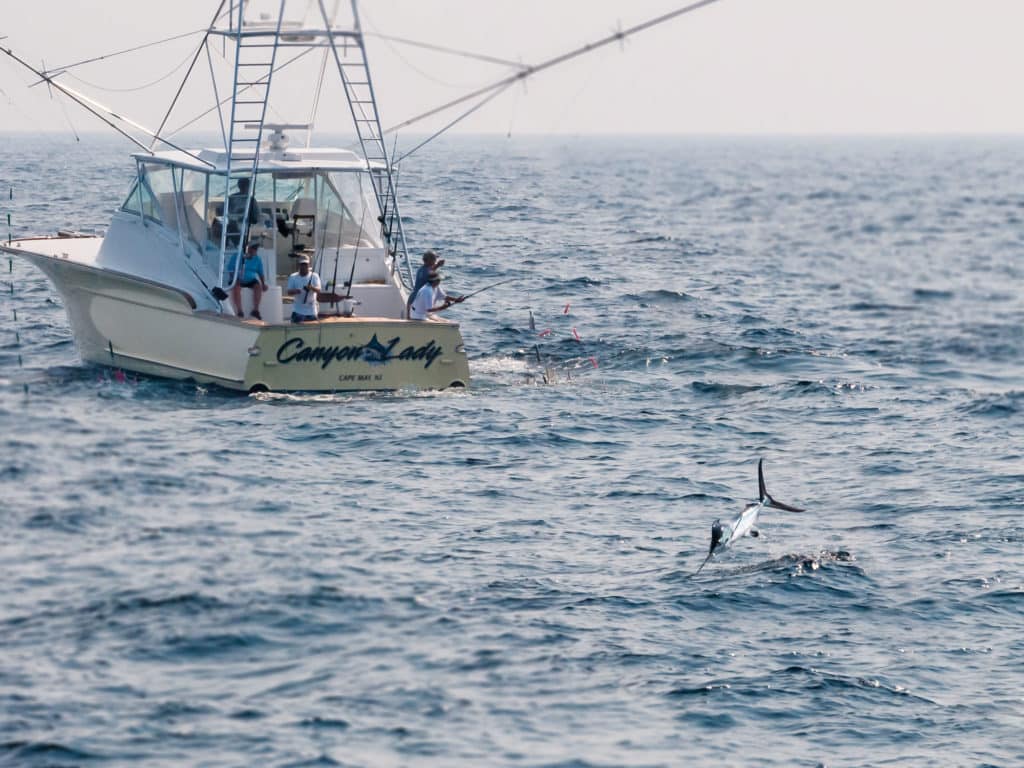
The trolled baits ride the waves and fly briefly through the air before touching down and digging back into the cobalt water. All hands on deck keep their eyes on the rigged ballyhoo, which appear to skip as if fleeing a predator, in hopes a hunting pack of white marlin will take notice. If it’s summer in the mid-Atlantic, chances are good the marlin will soon materialize. Whites invade the region this time of year and feed in cooperative groups, corralling schools of tinker mackerel, sardines and squid. Find one and you’ve found a bunch, so be prepared at all times for multiple billfish hookups.
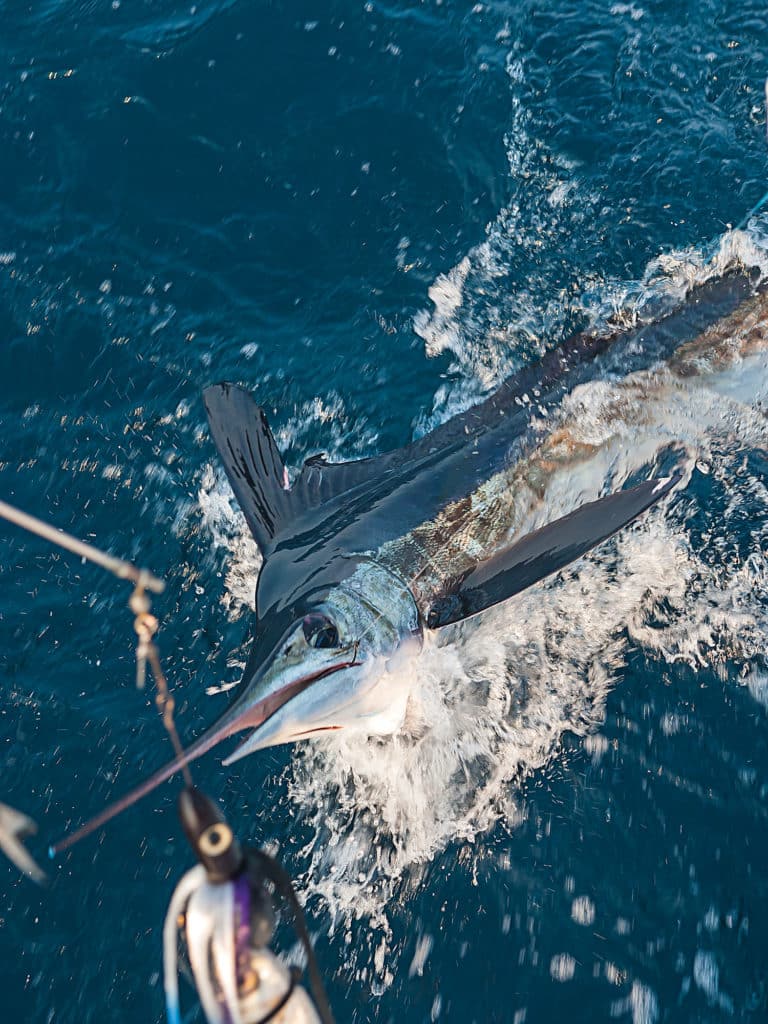
Window of Opportunity
Every summer, hordes of white marlin call the waters off the mid-Atlantic states home for three months as a result of their migration route, which starts off the northern coast of South America, moves through the Antilles, makes a stop for spawning near the Dominican Republic, then continues around the Bahamas and up the east side of the Gulf Stream.
“They typically arrive in July, somewhere between Spencer and Poorman’s canyons,” says Capt. Jon Duffie of Billfisher out of Ocean City, Maryland, who holds the modern-day record for the most releases in a day: 57. The white marlin then move closer to shore with warm core eddies, and Duffie targets them almost exclusively through the season. As fish move in from the Stream, he explains, they spread out along the Continental Shelf, following water temperature and bait concentrations.
“Boats out of Oregon Inlet start seeing whites in late July and continue to throughout August,” explains Capt. Daniel “Backlash” Davis of Manteo, North Carolina, who’s fished the area since 1979, initially as first mate on top big-game tournament sport-fishers and later as captain of various well-known charter boats. “We fish from the Triple Zeros up toward Norfolk Canyon throughout the season, but as soon as we get the first couple of cold northwesters in September, whites pull their disappearing act, and the fishing goes from red hot to nothing in a matter of days.”
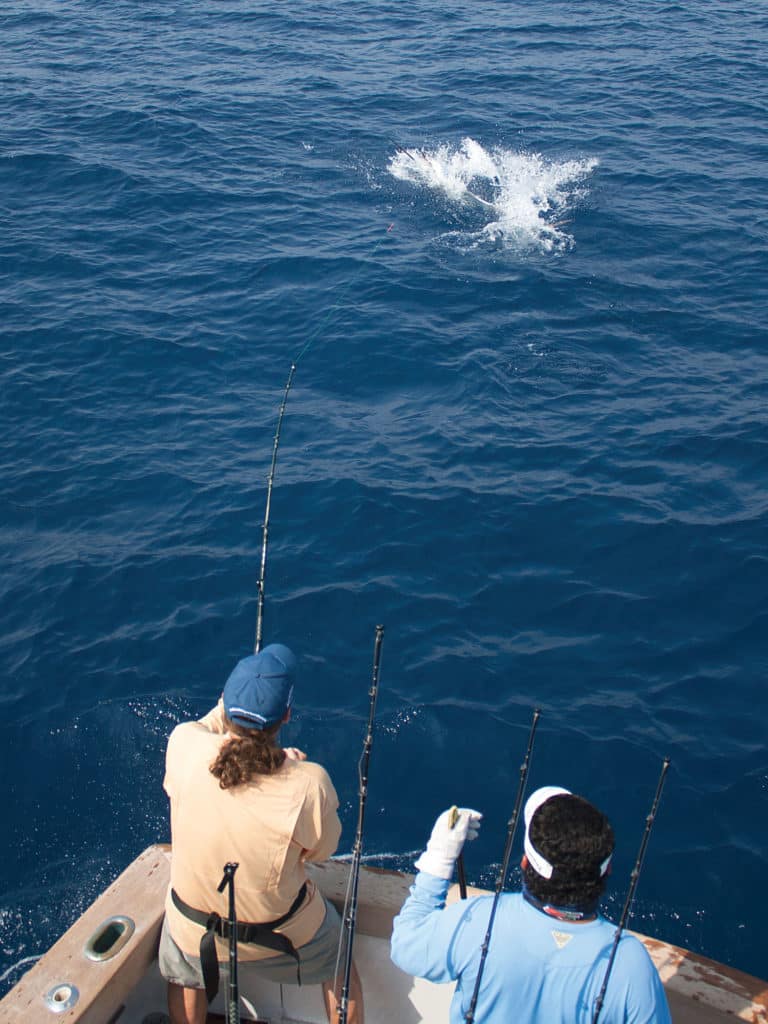
Targeting Whites
Getting your boat ready to target white marlin takes some preparation. Capt. Ryan Higgins, perennial tournament winner and skipper of Viking Yachts Company’s competition boats, says dredges — subsurface teaser systems that use a multi-armed frame to troll the equivalent of a school of baitfish behind the boat — are the single most important component to be successful.
Higgins, who fishes for whites out of Cape May, New Jersey, says: “For tournaments, we use rigged natural baits and a single dredge with dozens of mullet or large ballyhoo. The dredge is heavily weighted to stay under the surface at 7 knots and drop deeper when necessary.”
Natural bait dredges are labor intensive and expensive, but there are alternatives. Duffie uses dredges that combine plastic shad and real ballyhoo, as well as the latest generation of all-artificial dredges from Squidnation. “They’re armed with chains of plastic squids and work surprisingly well,” claims the captain. “The 6-inch Red-Sparkle squid dredge is really hot.” For white marlin, Duffie, Davis and Higgins prefer running their dredges from the cockpit, with the line that holds the dredge running through a ring off the lower leg of an outrigger for proper placement. That requires a dredge rod equipped with a heavy-duty electric reel for easy adjustments and fast retrieval whenever fish come into the spread. The captains also run a pair of daisy-chain teasers from the bridge, usually plastic squids with a horse ballyhoo rigged on either an Iland or a Joe Shute’s keel-weighted lure on the end.
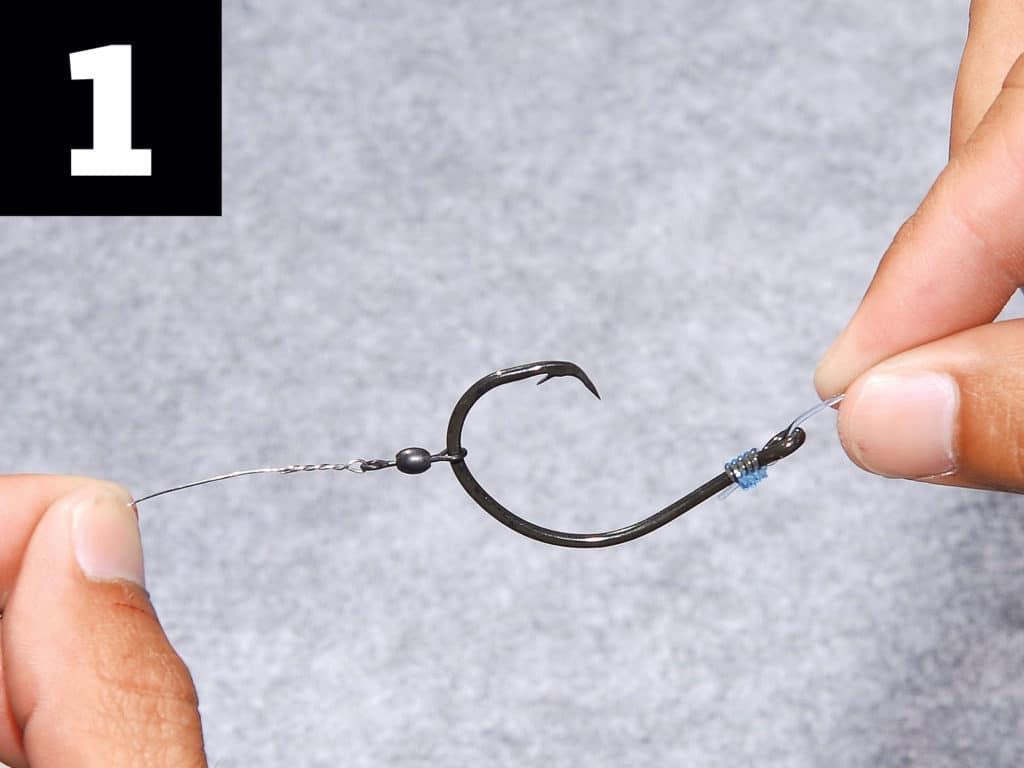
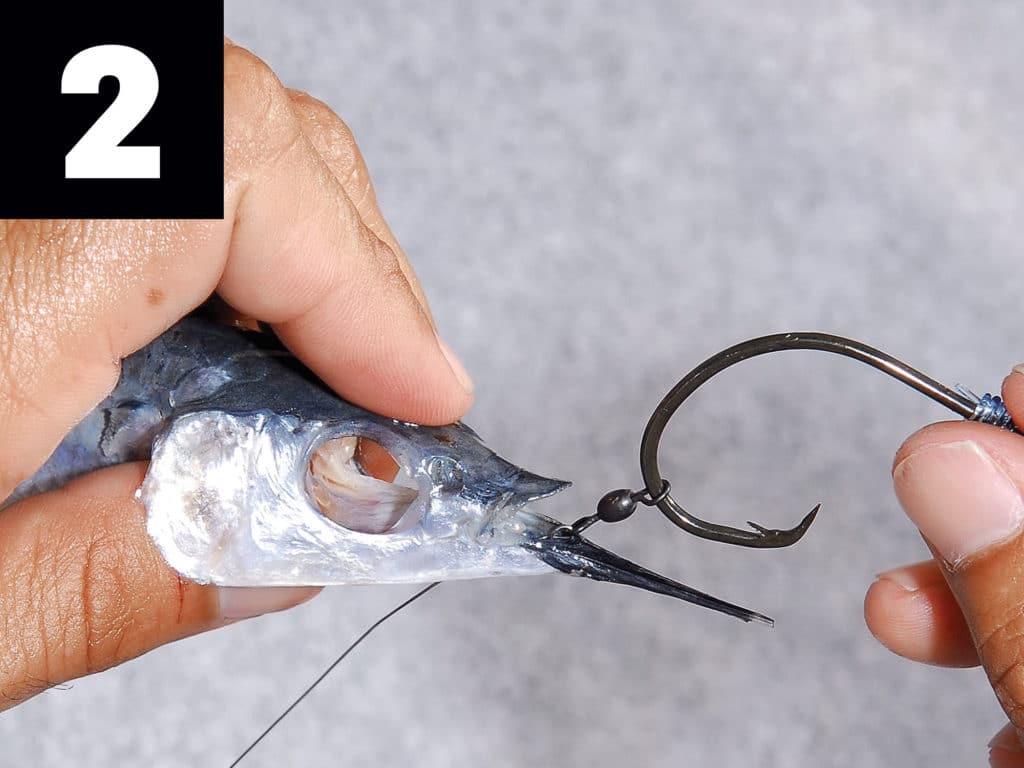
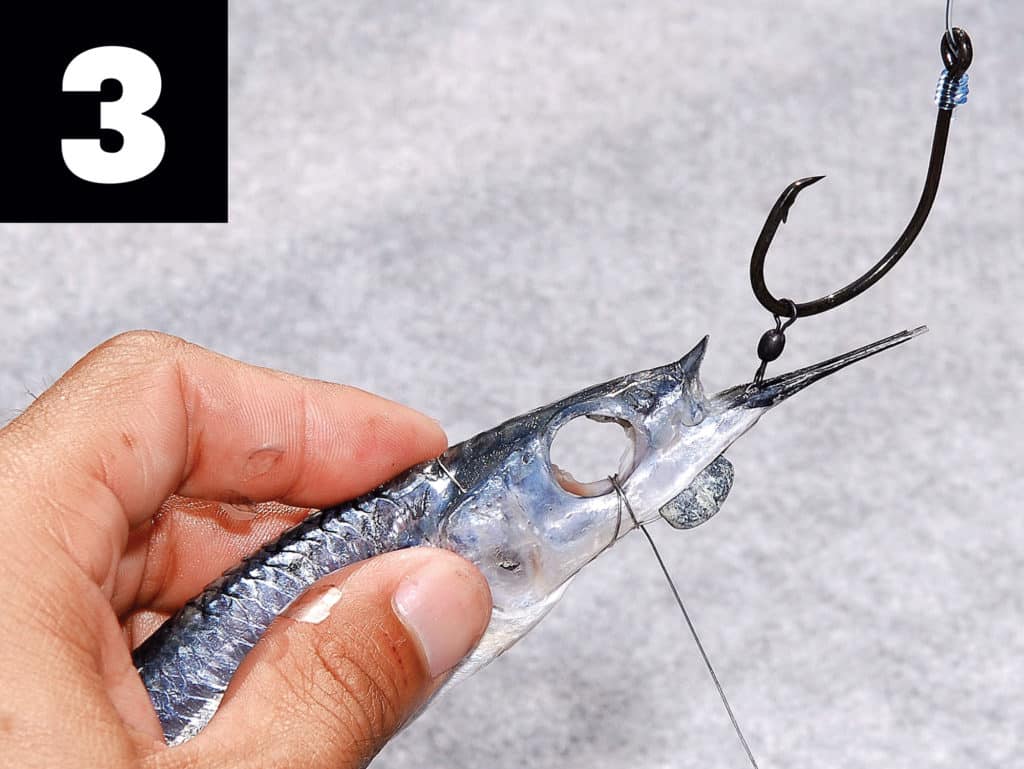
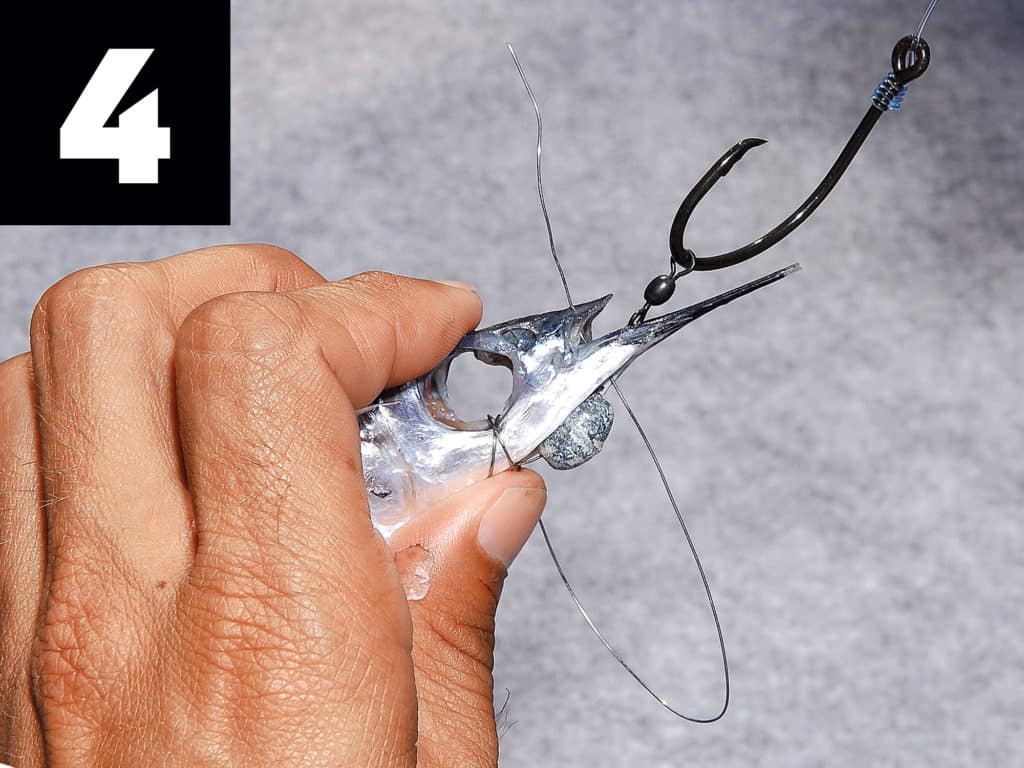
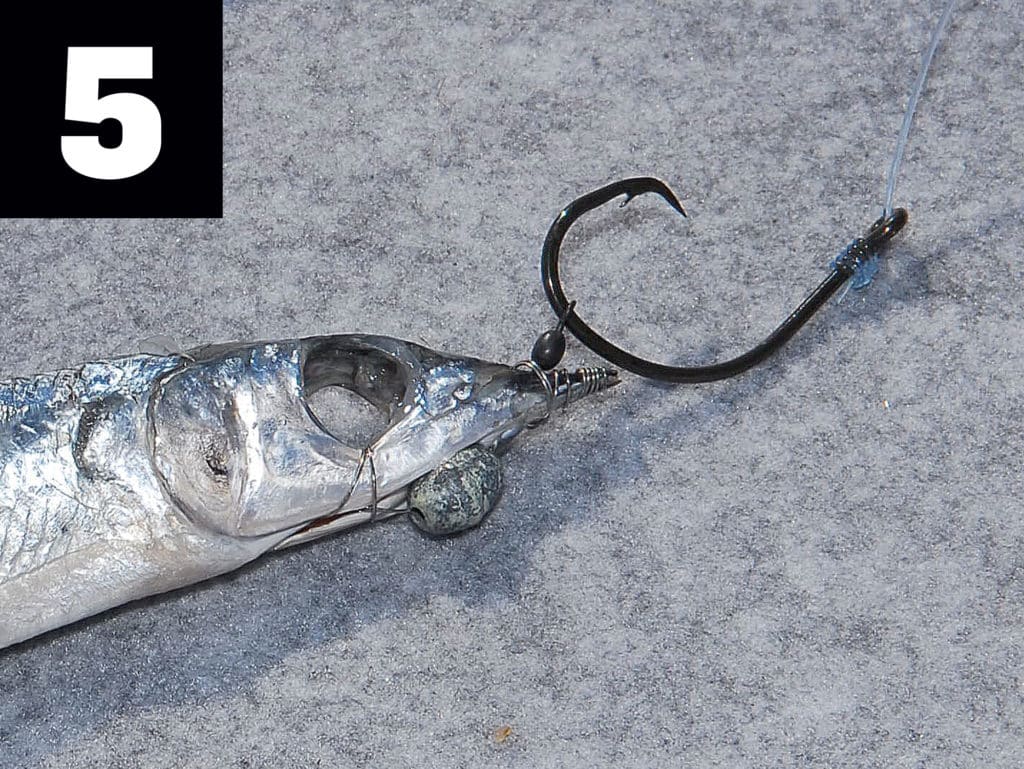
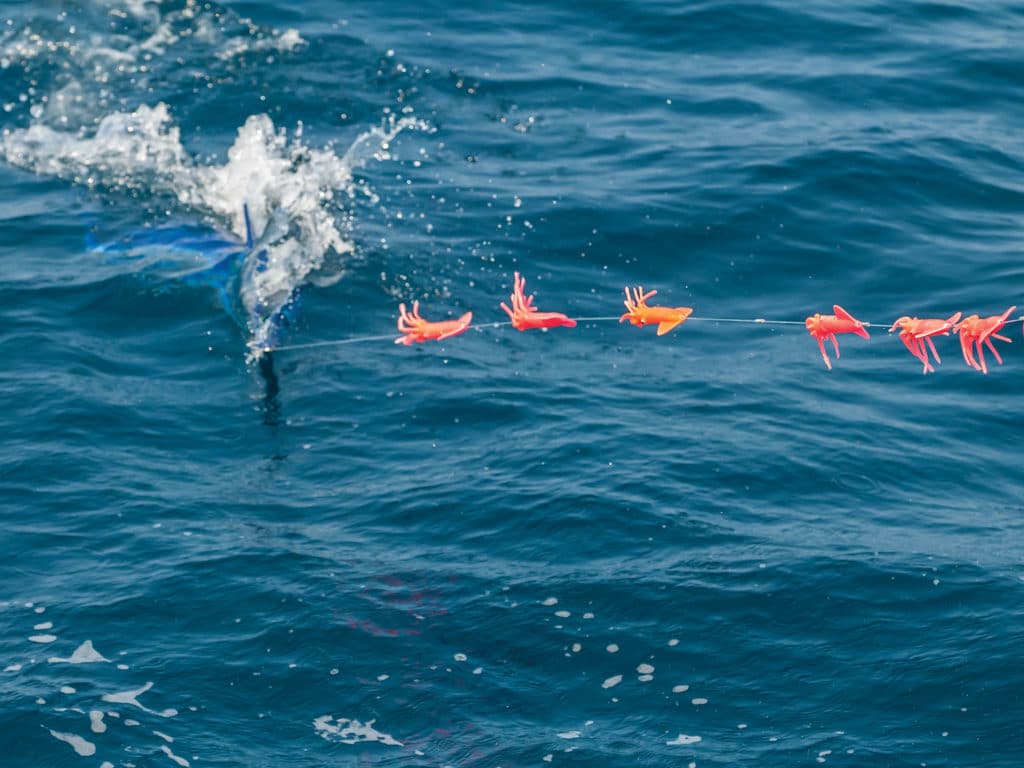
Gearing Up
White marlin, the smallest member of the marlin clan — large specimens might top 70 pounds — are great light-tackle fare. That’s why all three contributing skippers fish 30-pound-class stand-up outfits loaded with monofilament, 50- to 60-pound fluorocarbon leader and light-wire 7/0 in-line circle hooks. “This is a release fishery, and circle hooks lodge in the corner of the mouth so they don’t hurt the fish,” Davis says. “And once they’re set, circle hooks don’t come out, even if the fish gets slack line.” Four small ballyhoo (often called “dinks”) — two on flat lines and two long off the riggers — are the consensus, and the trio of veteran billfishers also adds one or two larger lures or rigged baits on 50- or 80-pound-class outfits for the occasional blue marlin. They always keep two or three dinks rigged on pitch-bait rods for the times when two or more whites show up at once, which happens often.
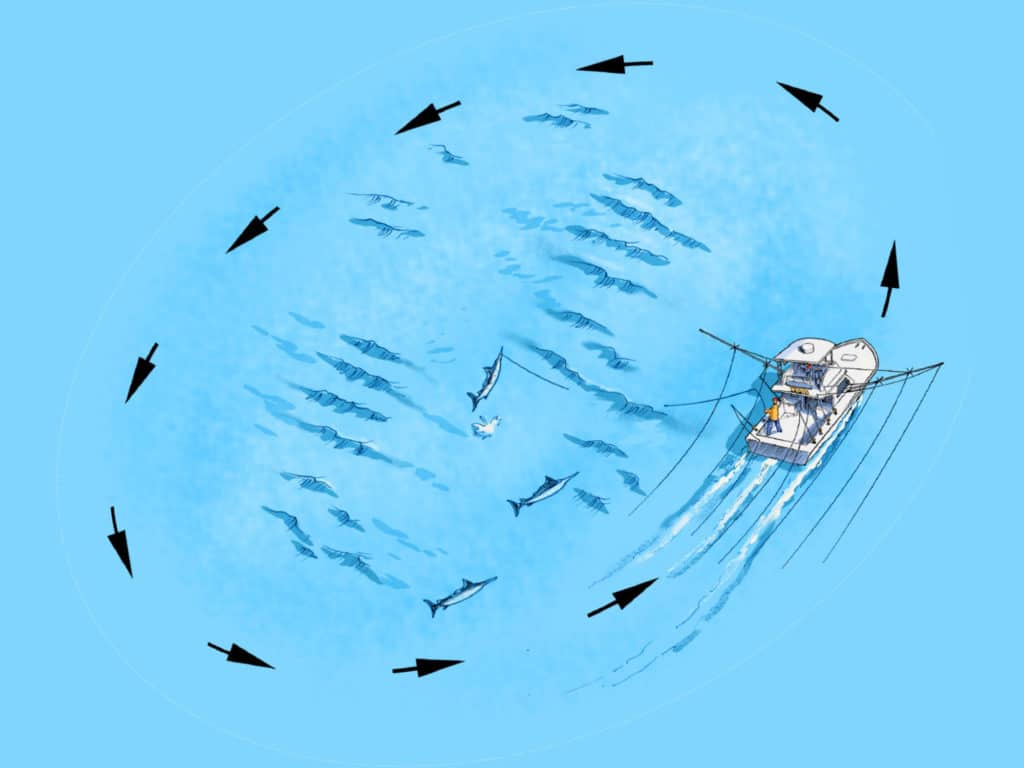
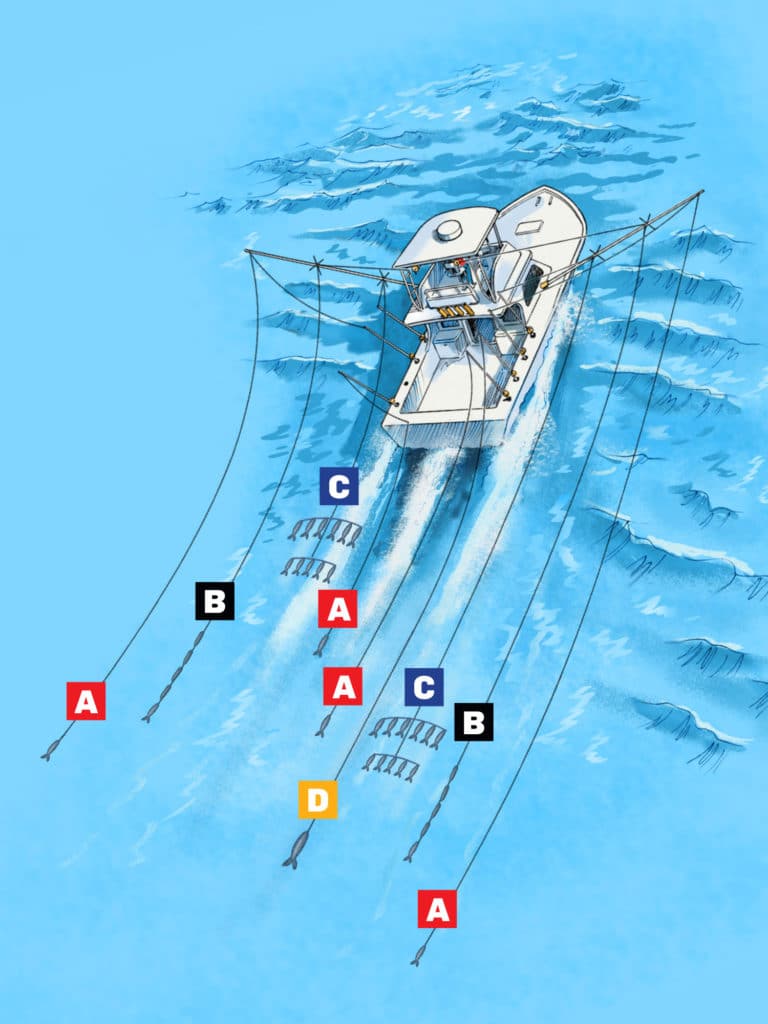
Search Patrol
“We usually encounter the early fish in 1,000 to 1,500 fathoms,” Higgins says. “I watch for eddies and temperature breaks, and gather reports from anyone and everyone. Last year, they came in around Baltimore and Wilmington canyons and then moved inshore. But most of July is spent looking for the conditions that concentrate both the bait and the marlin. I tend to run-and-gun and even troll a little faster, up to 7.4 knots,” he adds. “In August, the fish move in to ball bait in 40 to 100 fathoms, and we do more fishing and less searching. If you get on them one day, you can usually track down that same group of fish by starting a little farther south the next day. Come September, the whites have moved south, from Norfolk Canyon to the Triple Zeros, in 50 to 100 fathoms. Then they’re gone.”
“I do my homework the night before each trip via dock talk with other captains and examining sea-surface temperature charts,” Davis says. “Once in deep water, we keep our eyes open for the typical signs, like temperature and color changes, birds, and bait on the fish finder.” “My fish finder is the most important tool on the boat when I’m trolling,” Duffie confides. “It’s set to clearly mark marlin and bait pods. If they’re deep, I circle the area repeatedly, dropping my dredges a little deeper to try and bring them up.”
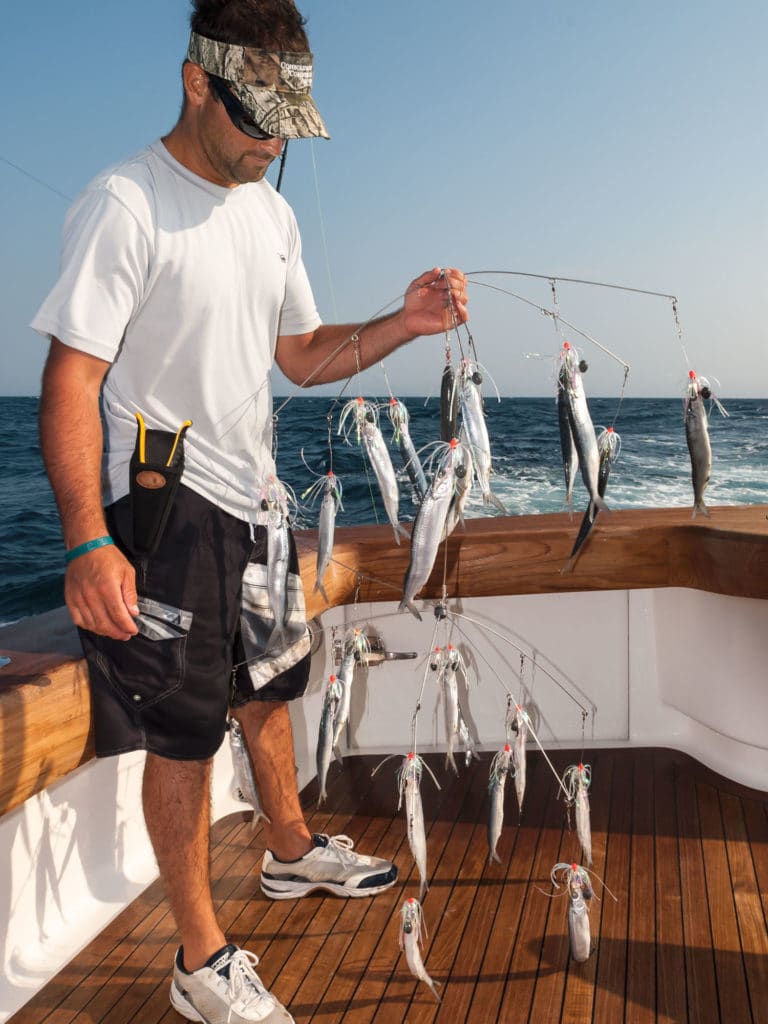
Multiple Hookups
Duffie says he always tries for multiple hookups. “When we get the first white on, I put the boat into a wide circle, keeping the fish on the inside without rushing to get it to the boat. That hooked white is the best teaser you can have. It thrashes on the surface, it spits up baitfish and essentially calls the rest of the pack to the surface to see what’s going on. “If the hooked fish is off the port side, I turn left, bring the inside dredge closer, and drop the other dredge back a little,” Duffie adds. “As we fight the fish, others frequently start popping up around the boat. Don’t be surprised to see a half-dozen or more come to the dredges.”
Pitch baits and knowing how to drop back to a fish in the spread are key to getting multiple hookups. Whites almost always enter your pattern attracted to a dredge or teaser, then move to one of the individual baits. If a fish is fixated on the dredge, drop a pitch bait and let it fall back under the dredge as if it were wounded. If you get a lazy fish that won’t commit on a trolled bait, drop the bait back and then reel it in like it’s trying to get away. Get the fish excited — you’ll see it light up — and it will bite. “Keep a careful eye on your dredges and teasers,” Higgins warns. “I always have someone watching the spread from the tower to alert us to incoming fish. It increases the odds of getting bit when the fish are not aggressive. If you get bit before you see the fish, you are likely to miss it and possibly others that come up with it.”
SWS Planner
- Mid-Atlantic white marlin
- What: White marlin
- Where: Offshore from New Jersey to North Carolina
- When: July through September
Who: Anglers with canyon-capable boats complete with fishing, navigational and safety equipment, and rigged for billfish
New Jersey: Capt. Scott Krawiec, 609-878-0765; Capt. Franz Huber, 610-960-0894; South Jersey Marina Charters, 609-884-3800
- Ocean City, Maryland: Capt. Jon Duffie, 240-372-8117; Capt. Mark Hoos, 410-456-7765; Sunset Marina Charters
- Oregon Inlet, North Carolina: Capt. Arch Bracher, 252-441-3197; Capt. Billy Maxwell, 252-472-1097; Oregon Inlet Fishing Center Charters
Fast Facts for Success
- DEEP TO SHALLOW: White marlin first show up in 6,000 to 9,000 feet, then move in as shallow as 240 feet to ball bait.
- GATHER INTEL: Pay attention to dock chatter and study sea-surface temperature (SST) charts to narrow your search.
- THINK PLURAL: When you hook a white, assume there are others with it. Turn the boat to keep the rest of your baits in action.
SWS Tackle Box
- Rods: 30-pound-class stand-up
- Reels: Matching conventional lever-drag
- Line: 30-pound monofilament
- Leaders: 50- to 60-pound fluorocarbon
- Hooks: Light-wire 7/0 in-line circle
- Bait: Some anglers prefer live tinker mackerel, but most opt for small rigged ballyhoo (often called “dinks”), chin-weighted so they swim naturally and resemble live bait.









